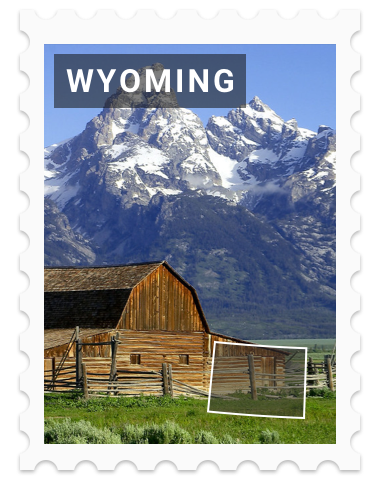Wyoming
Discover Wyoming

Capital
Cheyenne
Statehood
July 10, 1890
Wyoming, with its vast expanse of wild and rugged terrain, was home to various Native American tribes, including the Arapaho, Shoshone, and Cheyenne. These indigenous peoples had a deep connection to the land, relying on buffalo herds for food and crafting intricate beadwork and art.
In the early 1800s, the Lewis and Clark Expedition, led by Meriwether Lewis and William Clark, journeyed through what is now Wyoming. Their expedition marked the beginning of significant westward expansion.
In the mid-19th century, the Oregon Trail and California Trail brought a wave of pioneers, settlers, and prospectors to Wyoming. The Oregon Trail cut across the southeastern part of the state, leaving behind traces of wagon ruts that can still be seen today.
The mid-19th century also saw the establishment of military forts such as Fort Laramie, which played a crucial role during the Indian Wars and was a gathering point for westward-bound emigrants.
Wyoming's history is also linked with the expansion of the railroad. The completion of the First Transcontinental Railroad at Promontory, Utah, in 1869 brought the Union Pacific line through southern Wyoming, transforming the state's economy and leading to the development of towns along the rail route.
In 1890, Wyoming became the 44th state of the United States. It is known as the "Equality State" because it was the first to grant women the right to vote and hold public office.
Today, Wyoming remains a sanctuary for nature enthusiasts and history buffs alike. Explorers should visit historic sites such as Fort Laramie National Historic Site, hike in Grand Teton National Park, and stand in awe of the geothermal wonders at Yellowstone National Park.
Source ChatGPT
Major Airport
Jackson Hole Airport

Elevation
1,966 m
Opened
1930's
Runways
1






